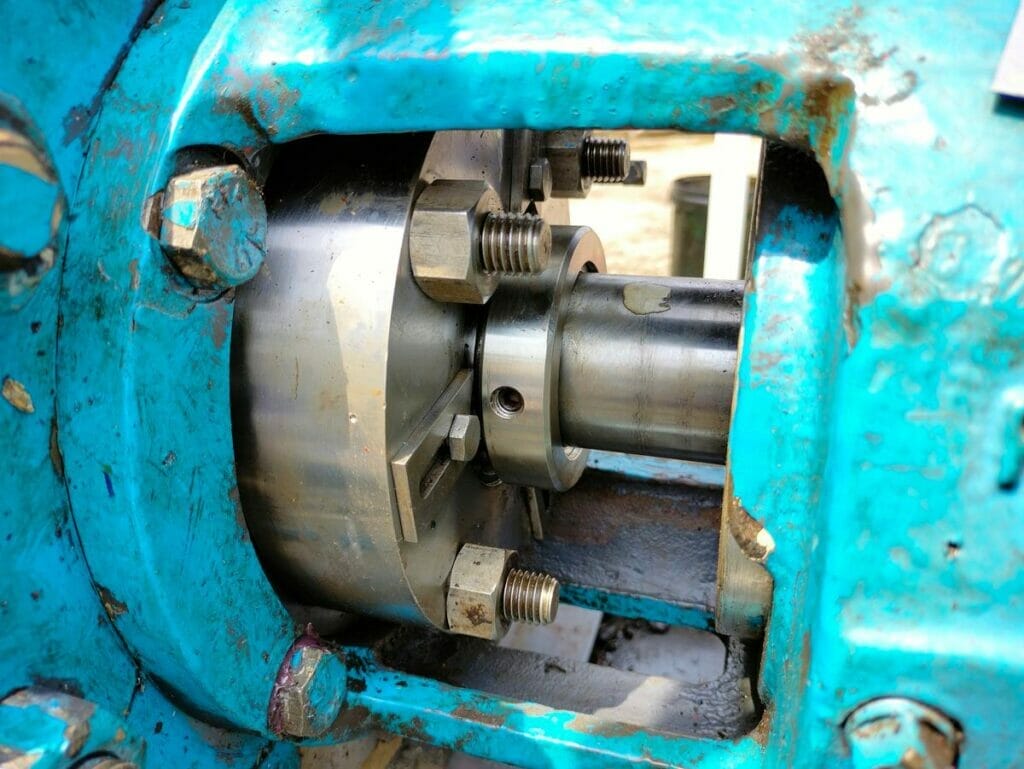Have you ever wondered what causes vibration and noise in rotating machinery? In this blog post, we’ll explore three critical factors: shaft runout, deflection, and whip. By understanding these concepts, you’ll gain valuable insights into improving the performance and longevity of your equipment.

Shaft Runout
Shaft runout refers to the deviation of a shaft’s centerline from its true axis of rotation. It is a measure of how much the shaft wobbles or is off-center as it rotates. Runout can occur in both radial and axial directions.
Radial runout is the deviation perpendicular to the shaft’s axis, while axial runout is the deviation along the shaft’s axis. Excessive shaft runout can cause vibration, premature wear, and reduced performance in rotating machinery.
Causes of shaft runout
- Manufacturing defects: Imperfections in machining, like uneven cutting or grinding, can cause shaft runout.
- Material inconsistencies: Variations in material properties or density can lead to uneven weight distribution, causing runout.
- Improper installation: Misalignment or poor fit during assembly can result in the shaft being off-center, leading to runout.
- Wear and tear: Over time, worn bearings, sleeves, and other support components can misalign the shaft, causing runout.
Measuring Shaft runout
Shaft runout is typically measured using dial indicators or precision measuring equipment. The shaft is rotated while the measuring device is held against it to determine the amount of deviation.
Radial runout is measured by placing the indicator perpendicular to the shaft’s axis, while axial runout is measured by placing the indicator parallel to the shaft’s axis. The maximum and minimum readings are recorded to determine the total runout.
How to fix shaft runout
- Identify the cause: Determine whether the runout is due to manufacturing defects, improper installation, or wear and tear.
- Straightening: If the shaft is bent or warped, it may be possible to straighten it using specialized equipment or techniques, such as heat straightening or mechanical straightening.
- Machining: If the runout is caused by surface imperfections, the shaft can be re-machined or ground to remove the irregularities and restore its true axis of rotation.
- Replacement: In some cases, if the runout is severe or the shaft is badly damaged, replacement may be necessary to ensure proper performance and longevity of the rotating machinery.

Shaft Deflection
Shaft deflection refers to the bending or deformation of a shaft under load. As a shaft rotates, the forces acting upon it can cause it to bend or deflect. Excessive shaft deflection can lead to vibration, noise, and even failure of the shaft or connected components.
Causes of shaft deflection
- Excessive radial loads: High radial forces can bend the shaft.
- Misalignment: Improper alignment with connected components causes uneven loading and deflection.
- Material properties: The shaft’s material, like its modulus of elasticity, affects its resistance to deflection.
- Shaft geometry: Diameter, length, and cross-sectional shape impact stiffness and susceptibility to deflection.
Calculating shaft deflection
To calculate shaft deflection, use the following formula:
δ = (W * L^3) / (48 * E * I)
Where:
- δ = Deflection
- W = Load
- L = Length of the shaft
- E = Modulus of elasticity
- I = Moment of inertia
Consider the shaft’s support conditions, as they influence the deflection calculation. For example, a simply supported shaft will have a different deflection than a cantilever shaft under the same load.
Compare the calculated deflection to the allowable deflection for the specific application to ensure the shaft meets the required design criteria. If the deflection exceeds the allowable limit, consider modifying the shaft’s dimensions, material, or support conditions to reduce deflection and improve performance.
How to reduce shaft deflection
- Material selection: Choose high modulus of elasticity materials with suitable strength for the shaft.
- Shaft sizing: Increase diameter or optimize cross-sectional shape to improve stiffness and reduce deflection.
- Bearing placement: Position bearings near applied loads to decrease bending moment on the shaft.
- Balancing: Properly balance the shaft and connected components to minimize uneven loading and vibration.

Shaft Whip
Shaft whip is a phenomenon where a rotating shaft vibrates or deflects in a wave-like pattern. This occurs when the shaft’s rotational speed reaches a critical frequency that matches its natural frequency. As the shaft rotates, it can develop a standing wave pattern, causing the shaft to whip or oscillate wildly. Shaft whip can lead to excessive vibration, increased stress on bearings and seals, and potential damage to the shaft or surrounding components.
Causes of Shaft Whip
- Unbalanced Forces: Uneven distribution of mass along the shaft can create unbalanced forces during rotation. These forces can excite the shaft’s natural frequency, leading to whip.
- Misalignment: Misalignment between the shaft and its supporting bearings or couplings can induce additional forces and moments on the shaft. This can trigger shaft whip, especially at high rotational speeds.
- Inadequate Shaft Stiffness: If the shaft lacks sufficient stiffness relative to its length and diameter, it becomes more susceptible to deflection and whip.
- Resonance: When the shaft’s rotational frequency coincides with its natural frequency or a harmonic thereof, resonance occurs. This amplifies the vibration and whip effect, potentially causing severe damage.
FAQs
What is the maximum allowable deflection shaft?
The maximum allowable shaft deflection is typically limited to 0.002 inches per foot of shaft length for most industrial uses.
What is an acceptable shaft runout?
For most industrial uses, total indicated runout (TIR) should be less than 0.001 inch per inch of shaft length.
In conclusion
Understanding shaft runout, deflection, and whip is crucial for optimal machine performance. By minimizing these factors through proper design, installation, and maintenance, manufacturers can reduce vibration, extend equipment life, and improve overall efficiency. Consult with experienced professionals to ensure your shafts are operating at peak performance.


